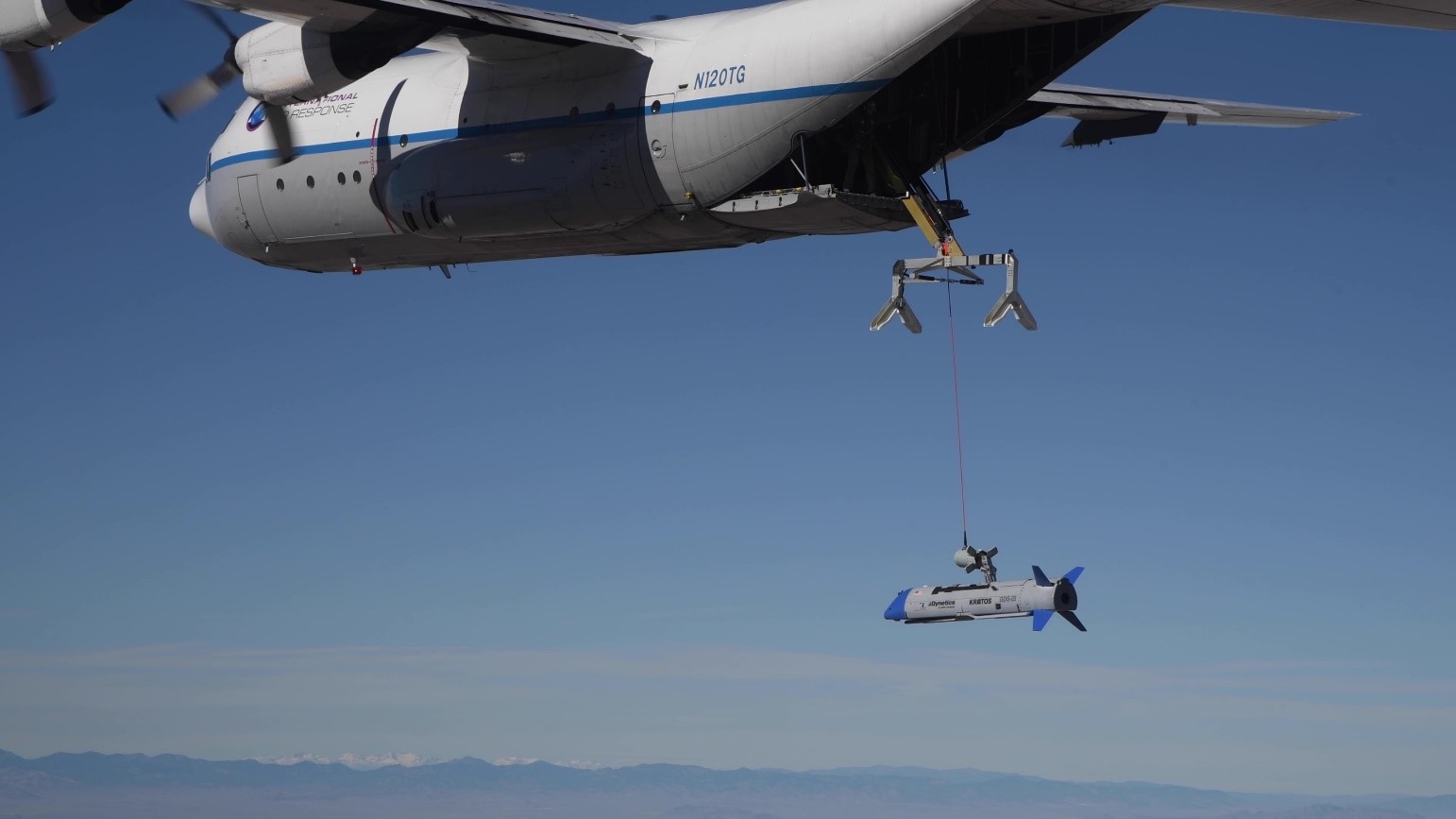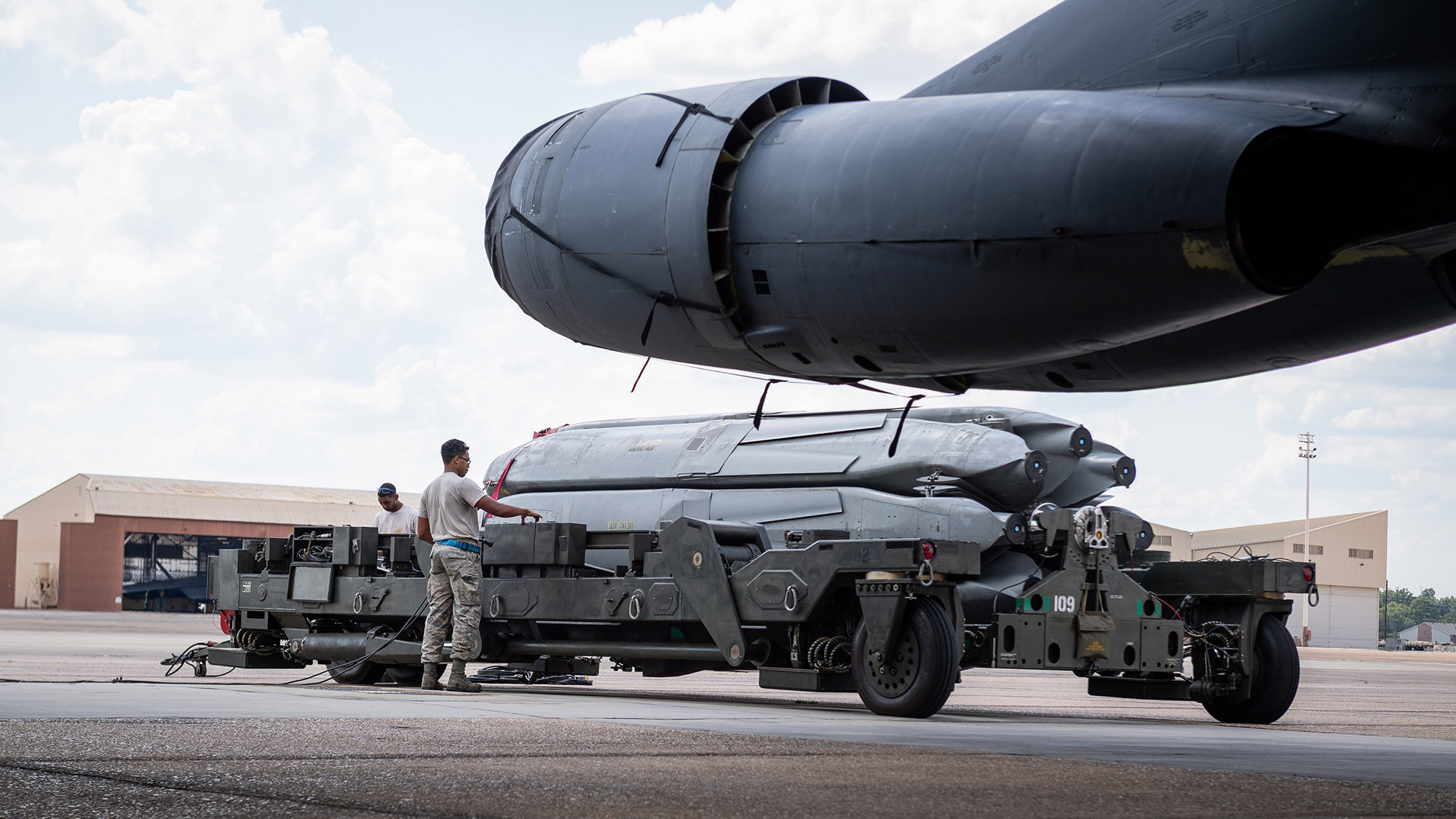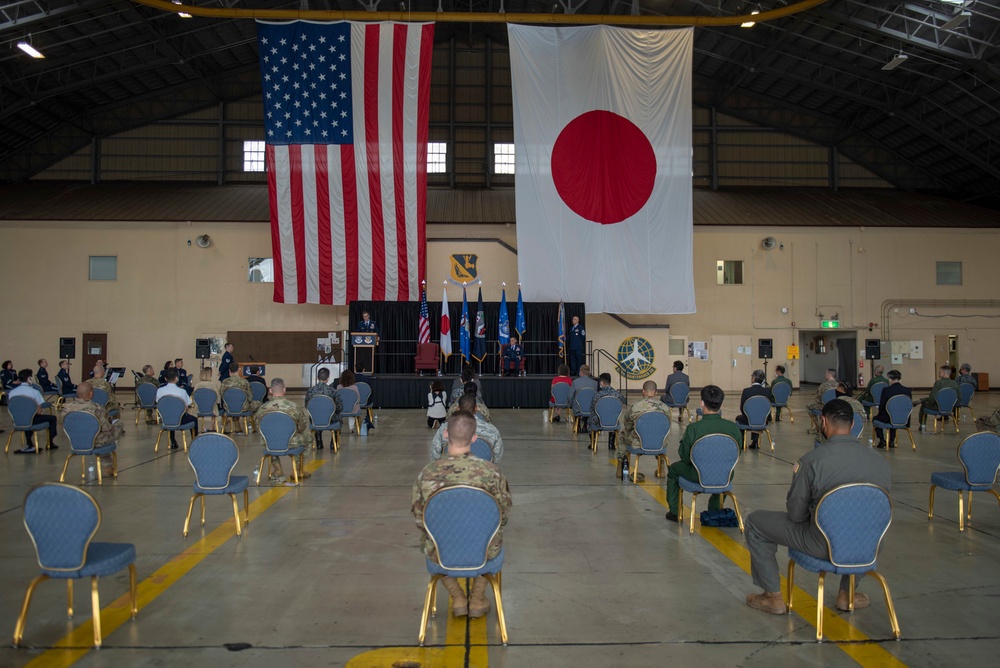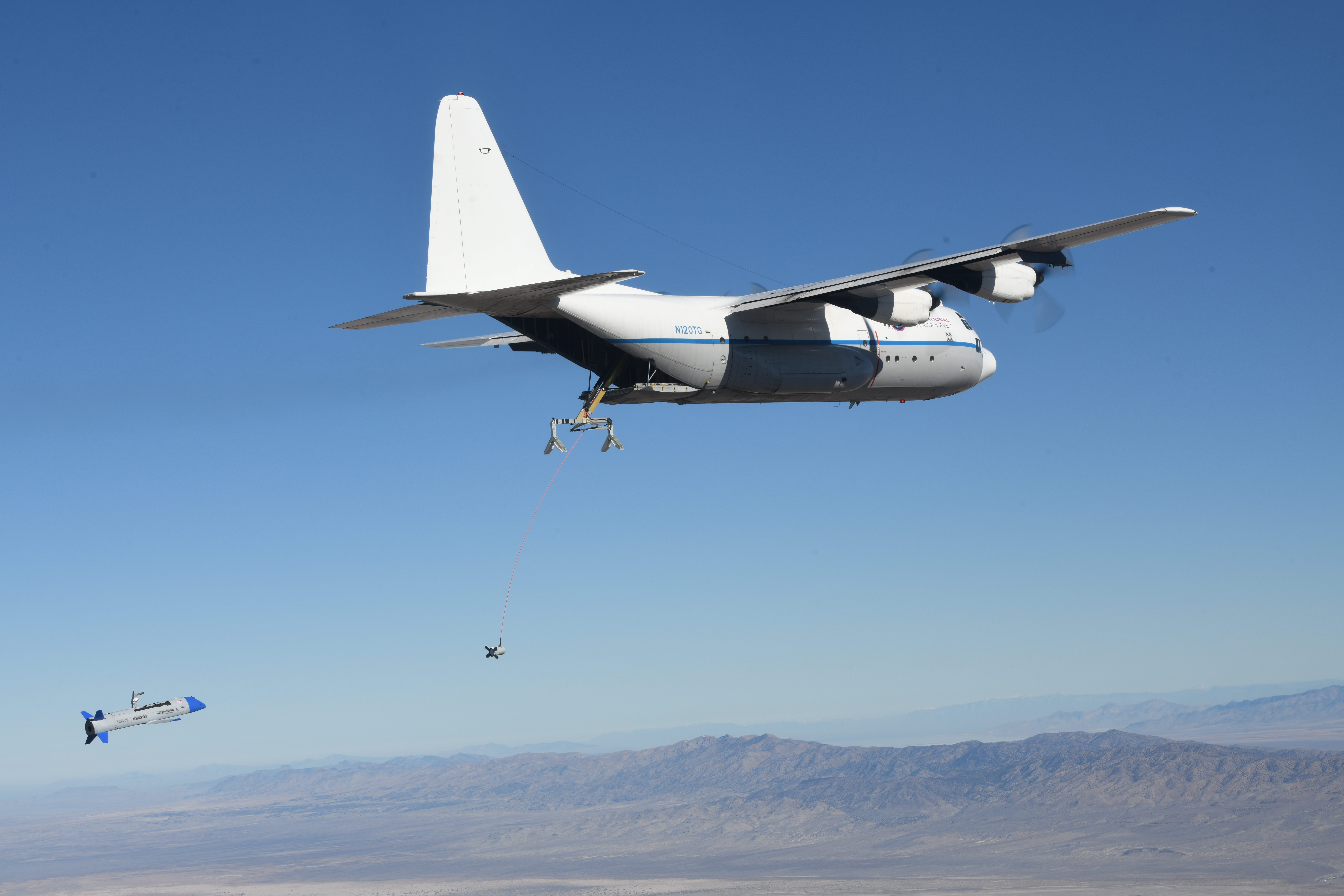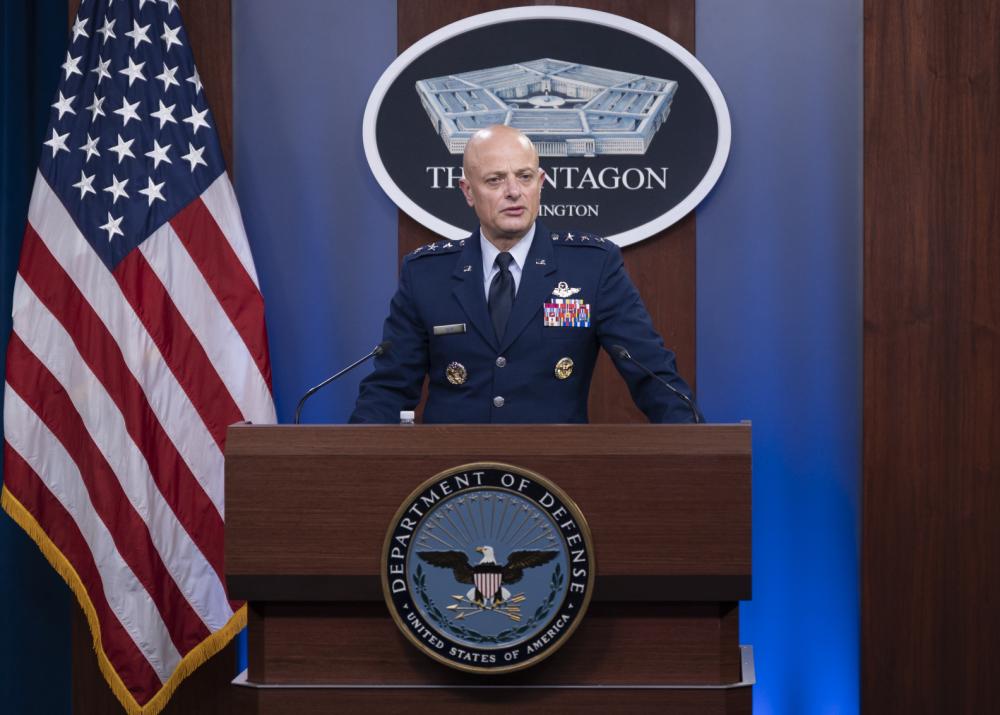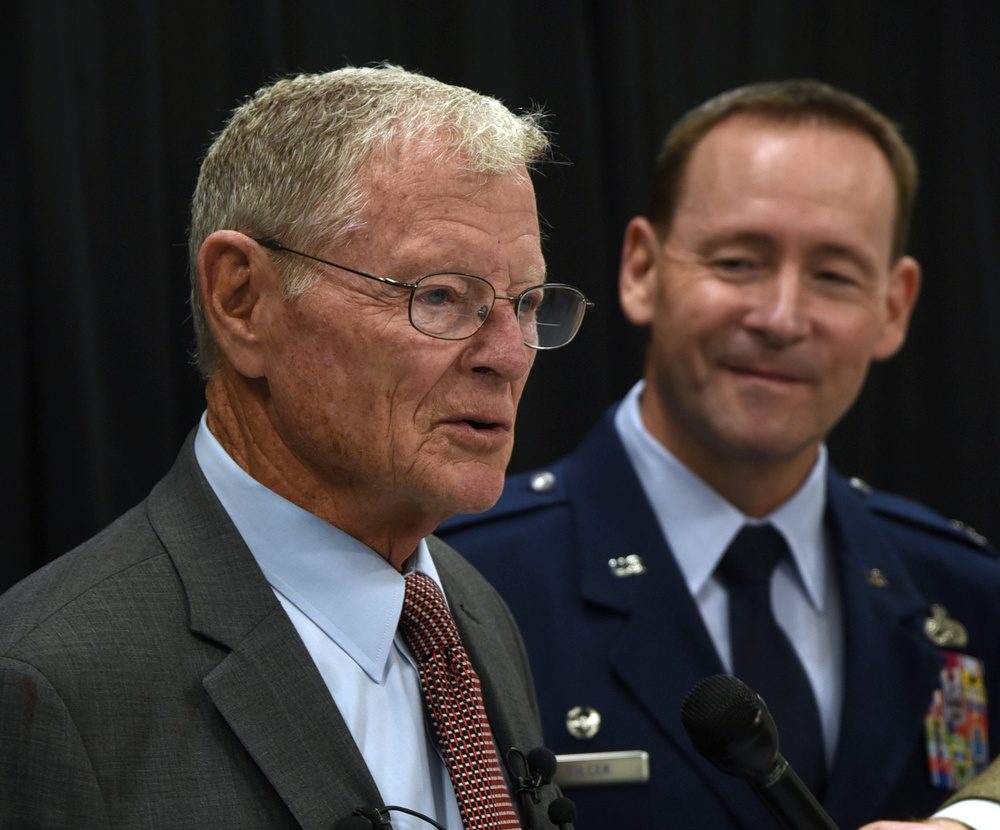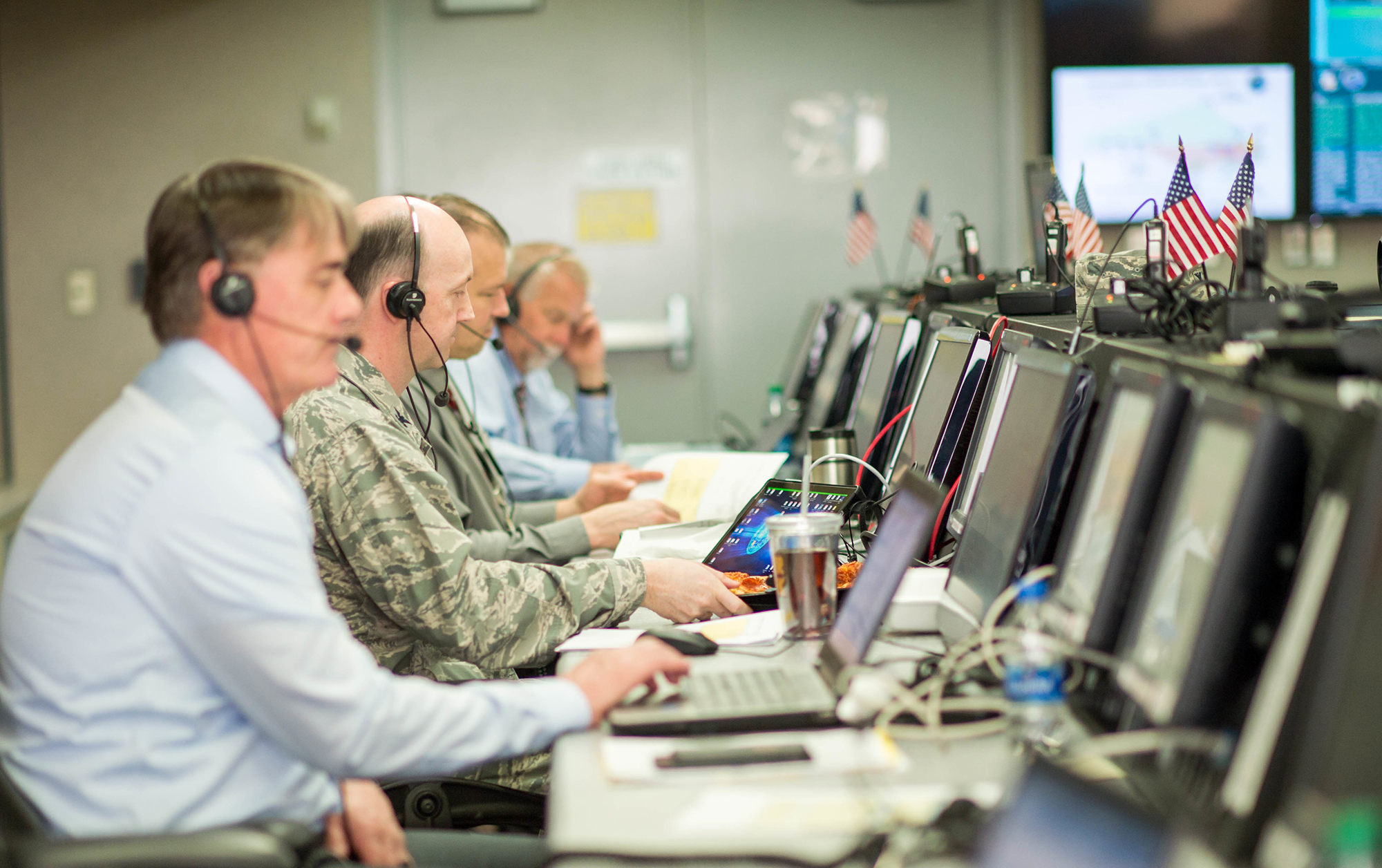The Gremlins drone swarming technology program needs to prove a C-130 can reel in four flying drones in 30 minutes before moving on to testing potential uses for the system.
Engineering, avionics, and program leaders for prime contractor Dynetics briefed reporters on the progress of the Gremlins program Nov. 8. Dynetics program manager for Gremlins, Tim Keeter, called the most recent test “a major milestone not just for the program but for unmanned aviation in general.”
For the past year, Dynetics and the Defense Advanced Research Projects Agency have tested aspects of the flight of the Gremlins vehicles, or GAVs, and the mechanical arm and tether that capture the drones and stow them onboard the C-130. Earlier tests verified safety systems and attempted docking, after which engineers addressed how to better mitigate aerodynamic interference. In a captive carry test, an X-61 was reeled out from the C-130 and back in.
Dynetics’ chief engineer for Gremlins Brandon Hiller said “making that mechanical connection, shutting down the Gremlins Air Vehicle, and reeling it in to the C-130” in the final test demonstrated “a very good process” that “matched our simulation predictions extremely well and demonstrated that it is, in fact, safe to conduct that sort of airborne recovery operation.” However, Hiller added, “We do still have some work remaining to improve the robustness of the system to get to the DARPA objective for recovery in the space of 30 minutes, so we’re not there yet, but … we know what needs to change in the system, both from a hardware and a software perspective, to get us to that point.”
The Gremlins avionics lead at Dynetics, Morgaine Kim, said the drones are designed to fly in assigned spots behind the C-130 until someone pushes a button, indicating the X-61s are ready to be picked up. At that point, each of the GAVs will get in line to be recovered.
Keeter indicated it’s possible that all three remaining GAVs will take part in the next test, in which case they would have to launch from two different C-130s.
He estimated that if the program proves it can haul in four GAVs within the 30-minute window by early 2022 and “that it is feasible, reliable, [and] repeatable for multiple vehicles and at an operationally relevant rate,” he said, “then you could expect a very short delay to get the next phase underway.” With just three Gremlins vehicles left in the inventory, however, success will be measured according to the rate of recovery of those that do take part.
Keeter said that in the next phase, Dynetics and DARPA hope to demonstrate the ability to put everything together “with payloads [and] single operators controlling multiple vehicles in a live constructed environment, performing different aspects of missions for the stakeholders to be able to say and showcase what this capability can really do and how it can help transform the military.”
In terms of how a system such as Gremlins might be used in the field, Keeter mentioned situations ranging from a small number of vehicles going into a denied area with “some sensors … to allow some standoff capability” to one in which “you need many more of these to really provide the decision to limit and then overwhelm an adversary with numbers.”
“A lot of that is going to be directed by the initial stakeholders and who that ends up being in terms of what mission they want to fly, and number, and host vehicle,” Keeter said. “It doesn’t have to be a C-130A,” he added. “We can adapt our recovery system to lots of different types of vehicles—as well as our launches.”
